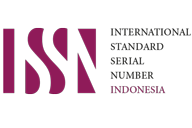MIE KAYA SERAT SEBAGAI PRODUK UNGGULAN DAN UPAYA EKSPLORASI UMBI-UMBIAN UNTUK PENINGKATAN SUMBER DAYA ALAM LOKAL (Fiber Rich Noodles Products As A Industrial Leading and Exploration Natural Resources For Local Improvement)
Abstract
Abstract
Noodles is one food that is very popular in Asia , one of in Indonesia. It is unfortunate that the raw material is wheat flour are still 100 % derived from imports. Indonesia can not produce wheat flour, because the climate is less suitable. Dried noodles have a low water content so to have a relatively long shelf life and easy handling. Flour needs continue to increase from year to year , so we need some effort to look for other materials that can partially replace wheat flour. Eg cassava flour . The use of cassava flour as an ingredient in the manufacture of flour substituent dried noodles are as one alternative to increase the added value of cassava . The purpose of this study is exploratory cassava and vegetables to produce fiber-rich noodles for primary agro-industry development . This study used the proportion of cassava flour : and wheat flour ( 70 : 30 g ; 50 : 50 g ; 30 : 70 gr ) and carrot flour , mustard flour , and chili powder respectively by 5 % .The results are most preferred dried noodle by the panelists was the proportion of cassava and wheat flour treatment ( 30 : 70 ) and the addition of chili powder 5 % , which results in dry noodles with water content of the composition of 10.525 %, 2.285 % crude fiber content, starch content of 39.970 %, 19.813 % protein content, the rehydration 50.475 %, 16.155 % elasticity .
Keywords: Dried Noodles, wheat, cassava flour, vegetables flour
Abstrak
Mie merupakan salah satu masakan yang sangat populer di Asia, salah satunya di Indonesia. Sangat disayangkan bahan baku mie yaitu tepung terigu masih 100% diperoleh dari impor. Indonesia tidak bisa memproduksi sendiri gandum sebagai tumbuhan penghasil tepung terigu, karena iklim yang kurang cocok. Mie kering mempunyai kadar air rendah sehingga mempunyai daya simpan yang relative panjang dan mudah penanganannya. Kebutuhan tepung terigu terus meningkat dari tahun ke tahun, sehingga perlu dilakukan suatu upaya untuk mencari bahan lain yang dapat menggantikan sebagian tepung terigu. Misalnya tepung singkong. Penggunaan tepung singkong sebagai bahan pensubstitusi tepung terigu dalam pembuatan mie kering adalah sebagai salah satu alternative untuk meningkatkan nilai tambah dari singkong. Tujuan dari penelitian ini adalah eksplorasi umbi singkong dan sayuran untuk menghasilkan produk mie kaya serat untuk pengembangan agroindustri primer. Penelitian ini menggunakan perlakuan Perlakuan proporsi tepung singkong : dan tepung terigu (70 : 30 gr; 50 : 50 gr; 30 : 70 gr) dan tepung wortel, tepung sawi, dan tepung cabe masing-masing sebanyak 5%. Hasil produk mie kering yang paling disukai oleh panelis adalah perlakuan proporsi tepung singkong dan tepung terigu (30 : 70) dan penambahan tepung cabe 5%, yang menghasilkan mie kering dengan komposisi kadar air 10,525%, kadar serat kasar 2,285%, kadar pati 39,970% , kadar protein 19,813%, daya rehidrasi 50,475%, elastisitas 16,155%.
Kata Kunci: Mie Kering, impor gandum, tepung singkong, tepung sayur
Pusat Publikasi | Teknologi Pangan | Fakultas Teknik (Gedung Giri Reka ) | Universitas Pembangunan Nasional "Veteran" Jawa Timur, Indonesia
Jln. Raya Rungkut Madya, Gunung Anyar Surabaya, 60294 Email : jtp@upnjatim.ac.id














